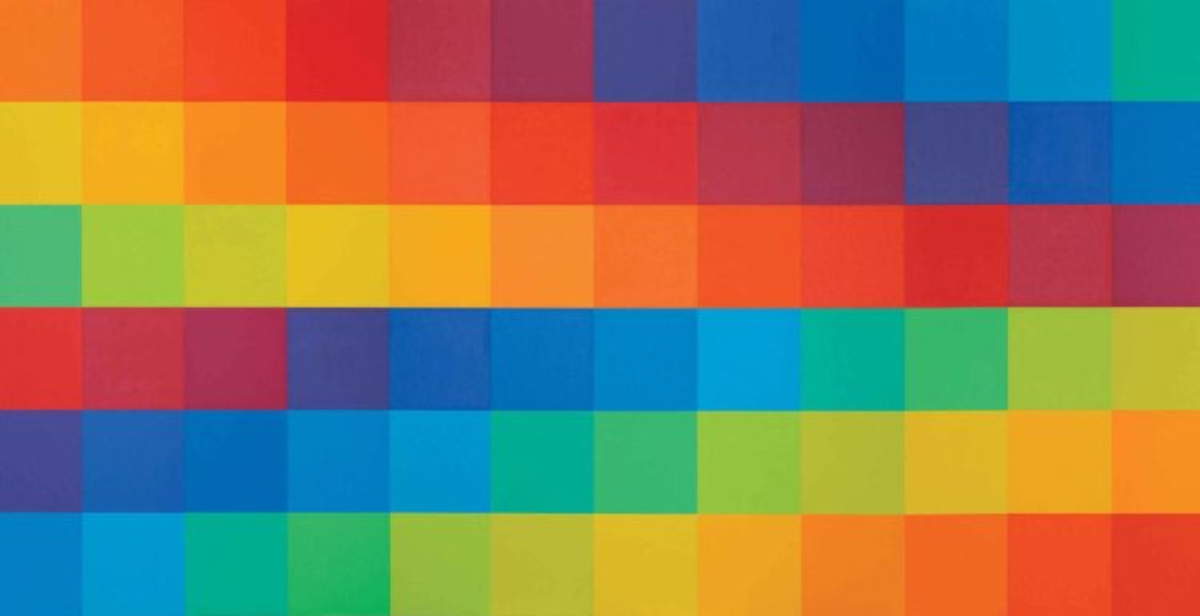More than two decades after the last museum exhibition dedicated to his work, the Museo d’arte della Svizzera italiana (MASI)in Lugano offers a new retrospective on Richard Paul Lohse. The Richard Paul Lohse exhibition, on view at the LAC venue from September 7, 2025 to January 11, 2026, is curated by Tobia Bezzola and Taisse Grandi Venturi and is a collaboration between MASI and the Richard Paul Lohse-Stiftung, Museum Haus Konstruktiv in Zurich, Josef Albers Museum Quadrat in Bottrop, and the Wilhelm-Hack-Museum in Ludwigshafen am Rhein.
The project brings together more than fifty paintings accompanied by drawings on paper from the foundation dedicated to the artist and from numerous public and private collections. The time span covered by the exhibition coincides with the four central decades of Lohse’s career, from the 1940s until his death in 1988.
A leading figure in Swiss modernism, Richard Paul Lohse was born in Zurich in 1902. He was an artist, graphic designer and theorist, as well as an activist engaged in resistance to fascism between the 1930s and 1940s. Later, he became one of the leading voices of the Zürcher Konkrete group. Social equality, pursued as an ethical and political ideal, constituted a mission for him that also found expression through painting. Lohse’s visual language is distinguished by a methodical coherence and a strictly rational internal structure. His works anticipate solutions that will later be explored in color field painting, conceptual painting, minimalist research and the generative systems later adopted by computational and algorithmic art. Despite the systematic approach, his works exert a strong perceptual and emotional pull, which eludes full theoretical decodification.
It was only around the age of forty that Lohse began his own journey into constructive-concrete painting. Behind him he had a youth marked by economic difficulties, his first artistic experiments and a solid career as a graphic designer and printer. The suggestions that led him toward abstraction came from the Dutch De Stijl movement, particularly the concept of unity between the pictorial support and its constituent elements, as well as the utopian energy of Russian Constructivism. These influences led him to develop a personal form of expression based on standardization of media and strict internal organization of composition.

His canvases are constructed as closed systems, in which square and rectangular elements, usually color fields, are related according to mathematical rules and modular structures. Seriality and repetition become tools of formal construction, but also vehicles of a broader meaning, linking aesthetics and ethical conviction. In the titles of the works and in their dating, the method of work is evident: in fact, two distinct moments are often indicated, that of the conception of the system and that of the actual pictorial execution.
Lohse himself, in his theoretical writings, insists on the autonomy of the method. “The method represents itself, it is the image itself,” the artist states in one of his texts. The works are based on two distinct compositional types: modular orders, in which the elements remain invariable, and serial structures, based on progressive variations. However, the rationality that structures the work does not exhaust its communicative scope: the color combinations continue to exert a visual impact that cannot be fully explained on a logical level.
The MASI exhibition opens with a speculative reconstruction of the artist’s studio. In this environment, drawings and sketches allow one to approach the ideational process underlying his paintings. From here, the exhibition is articulated as a journey through the places that marked the artist’s international career: from Zurich to Amsterdam, from São Paulo to Venice, via Kassel and New York. The narrative criterion follows some of the main exhibition stages that marked his public evolution.
A central moment of the exhibition is the three large versions of Serielles Reihenthema in achtzehn Farben, made in 1982 on the occasion of his participation in documenta 7 in Kassel. The works condense the artist’s systematic approach, his chromatic language and the relationship between formal structure and political dimension. The obstinacy in modular and serial repetition, far from being a formal exercise, takes on an expressive value in Lohse that recalls a worldview that is ordered but open to complexity. The exhibition is accompanied by a catalog published by Hatje Cantz, available in three separate language editions, Italian, German and English, with critical contributions signed by Tobia Bezzola, Evelyne Bucher, Taisse Grandi Venturi, Sabine Schaschl and Linda Walther. The theoretical insights allow Lohse’s work to be contextualized in the artistic and cultural landscape of the 20th century, offering additional tools for reading.
 |
| Richard Paul Lohse on display at MASI: a retrospective on the rational power of abstraction |
Warning: the translation into English of the original Italian article was created using automatic tools. We undertake to review all articles, but we do not guarantee the total absence of inaccuracies in the translation due to the program. You can find the original by clicking on the ITA button. If you find any mistake,please contact us.